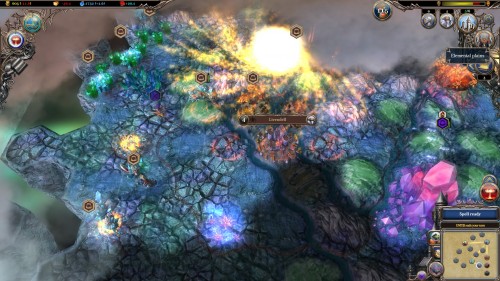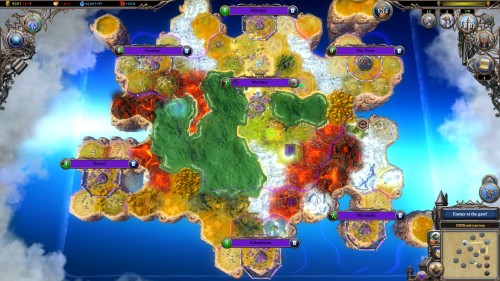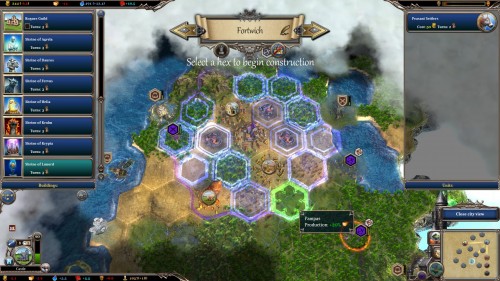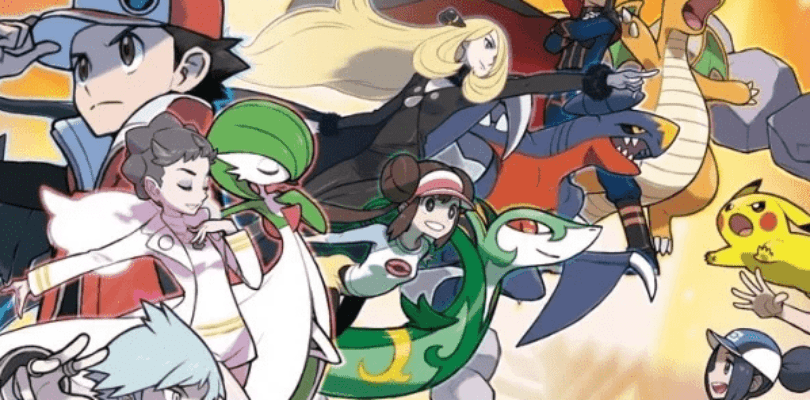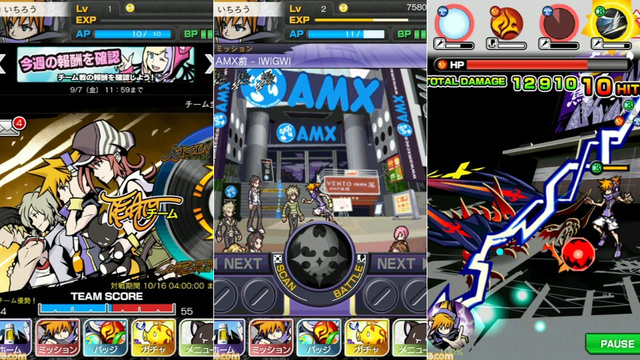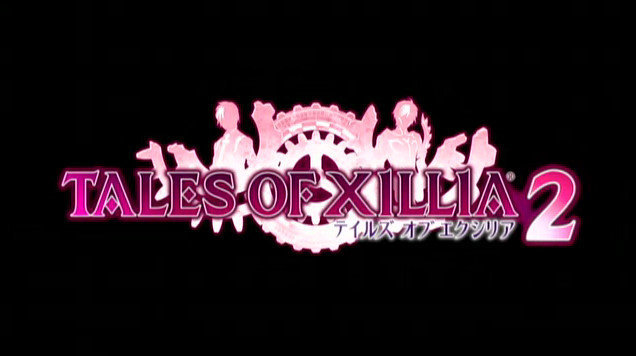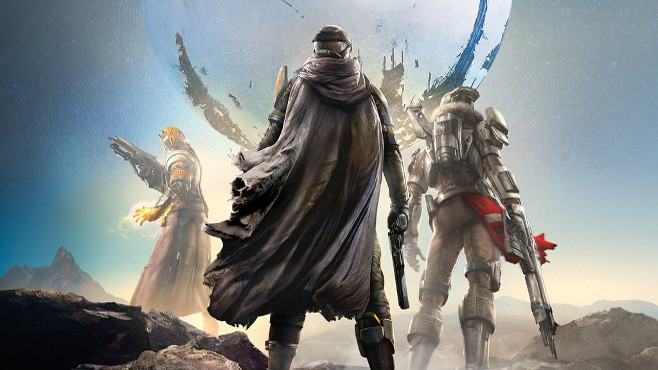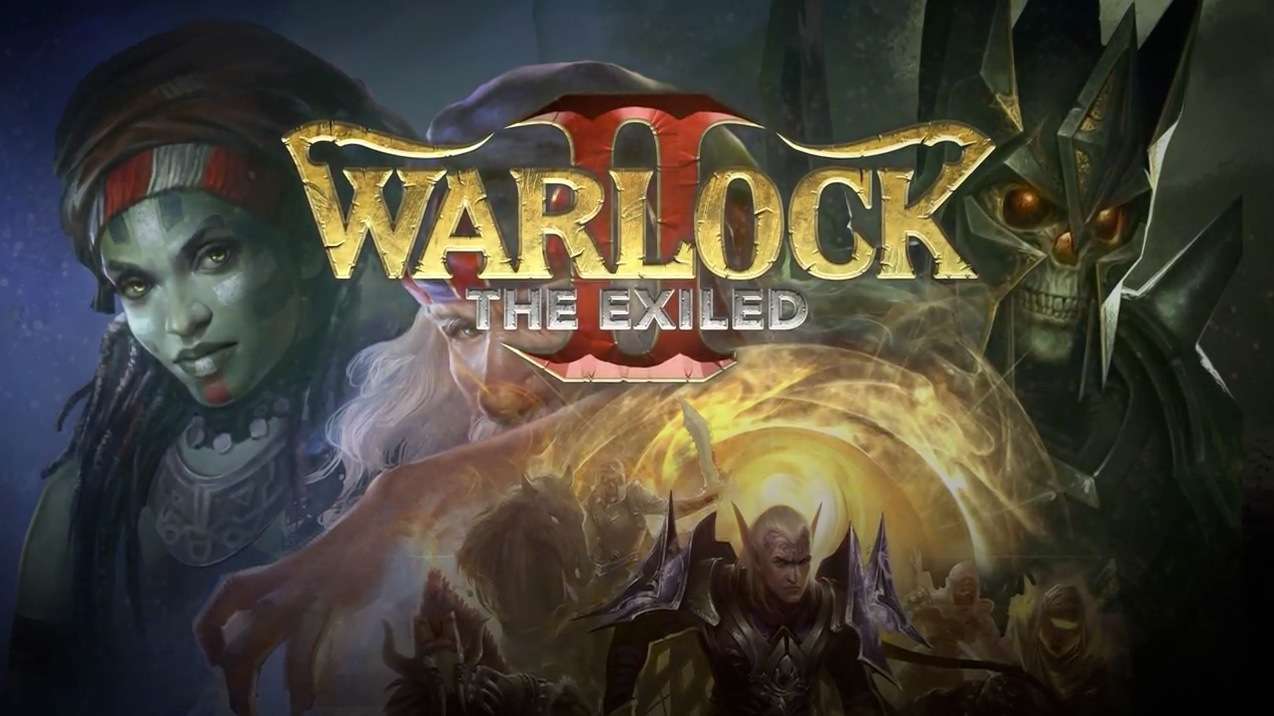
When is a sequel not a sequel? How little do things need to change in order to slap that all important roman numeral next to the title of the series? With Warlock II: The Exiled, developer Ino-Co Plus are wanting us to ask that very question, offering a fantasy strategy game that makes a number of mechanical tweaks, adds a couple of new features, and collects several downloadable modules from the original Warlock: Masters of the Arcane.
Of course, if you’re like me, and you’ve not played the first title in the series, then what is or isn’t added by Warlock II isn’t going to matter much. Just know that if you do buy this game, you’ll not have any need to buy its predecessor, as you’re essentially getting a definitive collection of that game.
The game itself is a turn-based strategy game, not entirely unlike a fantasy Civilisation, though with far less focus on the actual civilisation-building and more focus on the civilisation-conquering side of things. You are one of the Great Mages, powerful beings who rule over their empires in a world that has been shattered into several fragments by the United One. Thus exiled, your goal is to take back the world of Ardania from the United One and his four Vicars.
Whether you play the game’s regular story mode, or the new sandbox mode, your end goal is the same: to reach the land of Ardania and defeat the United One. The difference is that, while the story mode is a predefined campaign with set events and tasks, the sandbox mode offers a more randomised, Civ-style play mode. This is the main new feature in Warlock II, and the most rewarding aspect of the game.
The shattered lands that you must fight through are represented as small floating continents, linked by portals. An overview map allows you to switch between these individual worlds. Units must be sent through the portals in order to expand and develop. You’ll need to establish settlements in each of the worlds, or take over the existing cities there as you can.
Combat is fairly simple, and will be easy for any Civilisation V player to pick up. Units attack and defend on the main map, and the game handles all the necessary number crunching to determine battle outcomes. There’s standard ranged and melee units, as well as more advanced magic-wielding units and flying units.
City development allows for the production of new units, as well as better defensive capabilities for the cities. Unlike Civilisation V, where cities develop on a single tile, despite visually expanding into surrounding tiles, City additions in Warlock II are placed in the tiles surrounding the city, meaning you’ll need to have room to fit everything in.
Rapid expansion in Warlock II is also hindered by an unrest mechanic. After a certain threshold, new cities conquered or established in your empire will add to unrest, making production difficult. The way around this is to convert cities into specialised cities that contribute to a single aspect of the empire, be it defence of a particular region or worshipping a particular god. Once converted, cities no longer contribute production to your empire, however they also no longer contribute to unrest.
The floating continents all look really cool, and there’s some nifty effects, such as water pouring over the edge into the void and small bits of floating rock beyond the edge of each world. Ground textures range from lush greenery to desert to scorched wastelands, with each type representing different challenges for empire development. Units and cities look pretty good, too. The menus have a few rough edges with text placement, but overall they do their job.
The diplomacy system is something of a letdown. It’s possible to form alliances with other great mages (and, of course, backstab them later on as necessary) and most of the basic options for diplomacy are there, but don’t expect the more advanced ideas that you might see in Civilisation V. The reality is that Warlock II is much more focused on completing missions and goals, and most of its systems are structured around that. It’s not as open-ended as a Civ title. Even the sandbox mode has semi-random quests and goals to complete.
Warlock II then, is a good fantasy strategy title. It has a few rough edges here and there, but if the idea of Civilisation in a fantasy setting appeals to you, then you could do a lot worse than pick this up on Steam.
Good fantasy setting
Detailed visuals
Sandbox mode means the story is different each time
Not a lot of changes from the first game
Lack of polish in the presentation
Weird, out-of-place humour

